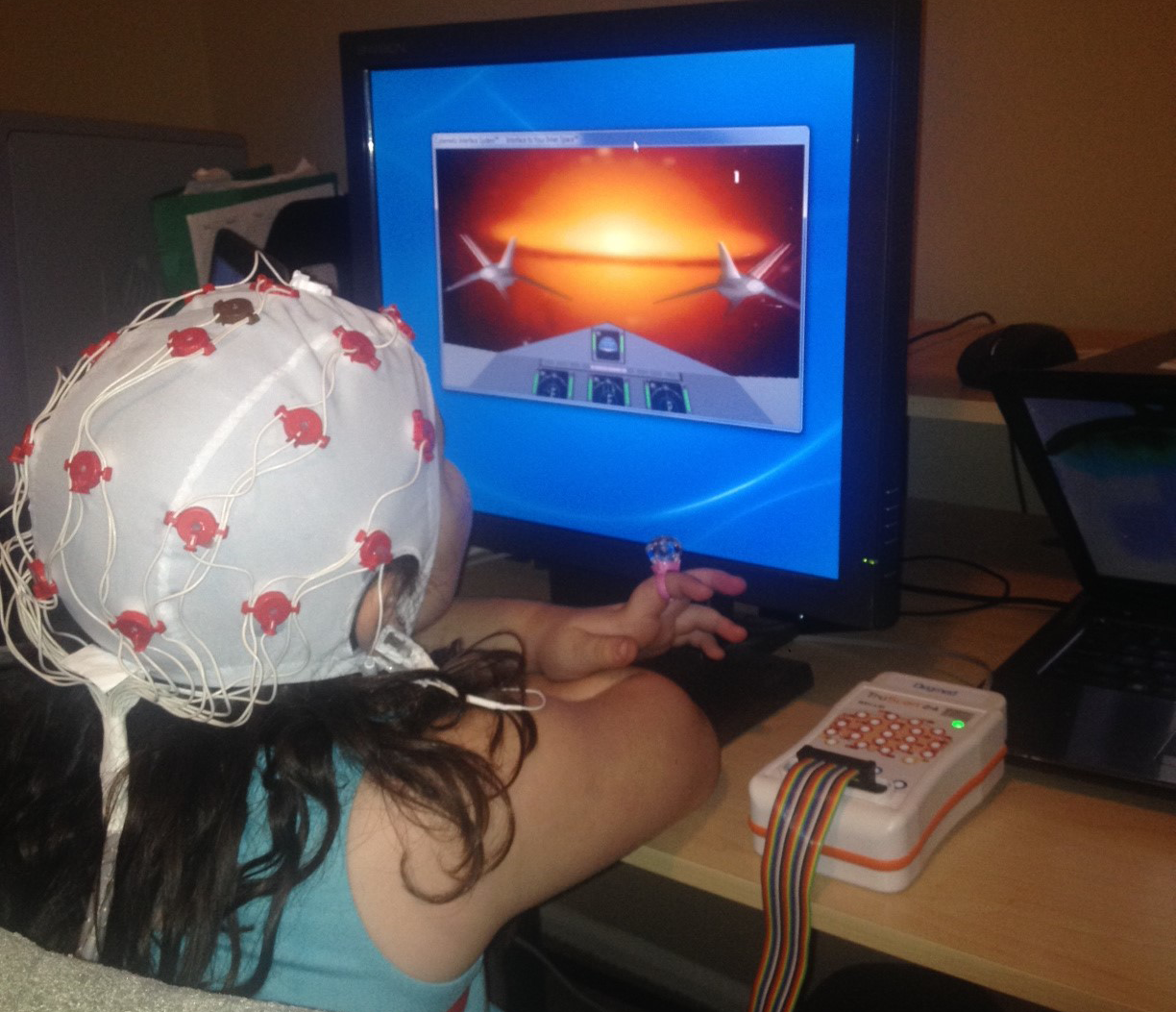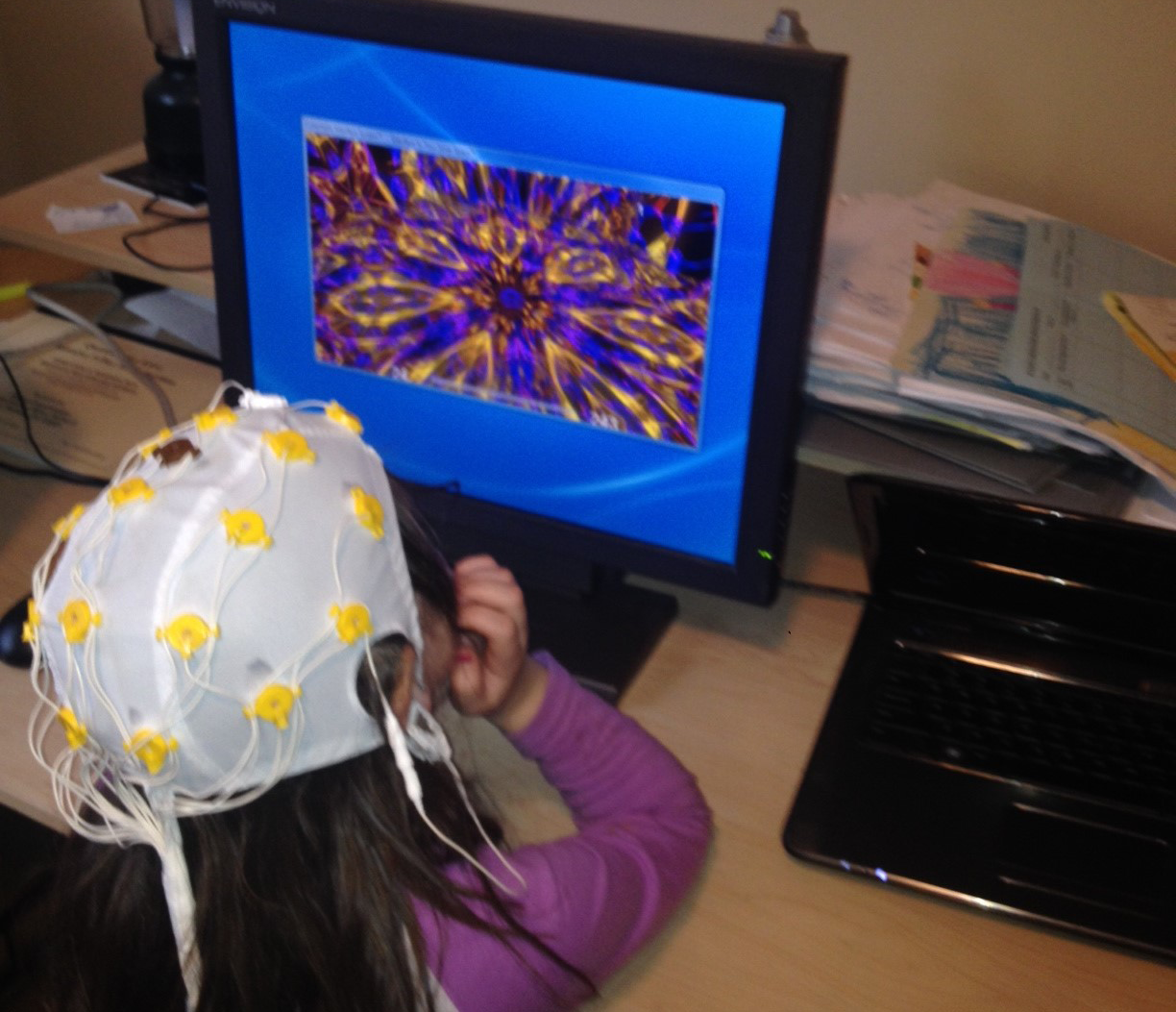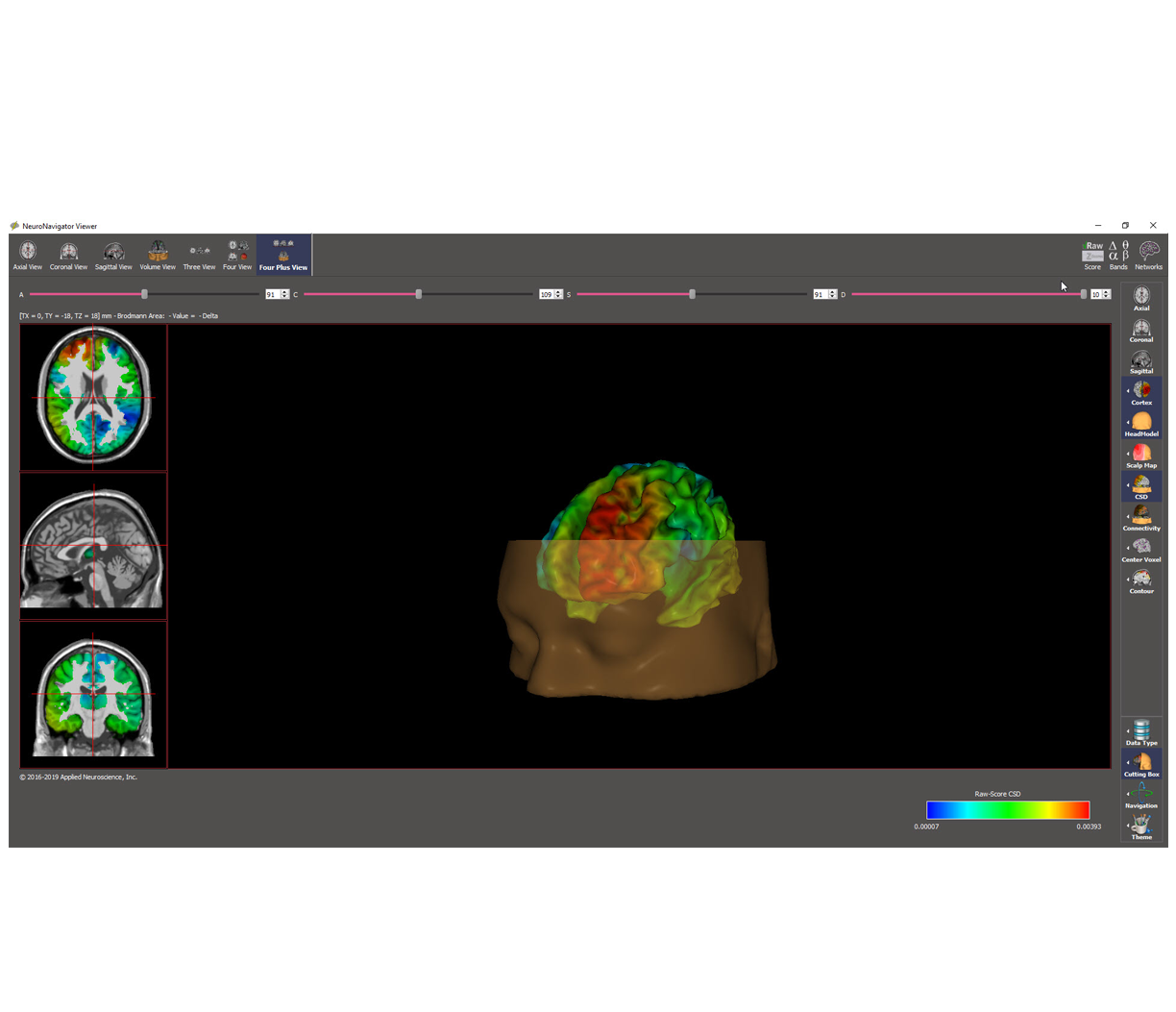“Neurofeedback should play a major therapeutic role in many difficult areas. In my opinion, if any medication had demonstrated such a wide spectrum of efficacy, it would be universally accepted and widely used. It is a field to be taken seriously by all.’’
Dr. Frank H. Duffy, M.D.
Pediatric Neurologist & Professor, Harvard Medical School
What is Neurofeedback?
With individualized coaching, clients navigate games and exercises with their mind to promote healthy brain function. Neurofeedback can act as a drug-free solution for attention deficits, learning difficulties, executive functioning weaknesses, anxiety, neurological disorders (e.g., traumatic brain injury), and various other issues by improving mental performance, emotional control, information processing, and memory in people of all ages (e.g., children 3+ years old through adults). Neurofeedback can also be used by individuals already taking medication, if desired. We use top of the line amplifiers, combined with Neuroguide Quantitative EEG (i.e., qEEG) and Neurofeedback systems. This includes 19-Channel Z-Score Neurofeedback (both swLORETA and Surface), which has demonstrated strong efficacy in the treatment of a wide variety of conditions.
The Use of NeuroField
NeuroField is a special/advanced supplement to neurofeedback that is highly effective in treating a wide variety of conditions, with treatment effects being seen very quickly in most cases. NeuroField is often combined with other neurofeedback techniques (e.g., Z-score training) to facilitate the brain’s ability to produce specific wave forms. One treatment option, referred to as “Intensives”, involves the client coming in for treatment 4-5 days of the week for 2-3 weeks. Nicholas Dogris, Ph.D., the health psychologist who developed NeuroField, has documented dramatic improvements in symptoms in many individuals receiving intensive treatment protocols. Following the qEEG/brain mapping, we can discuss whether NeuroField could be helpful for you or your child.
We are one of only several NeuroField providers in Arizona.
– Videos about NeuroField are available on the Reseach on Neurofeedback Page. –
Clients Who Benefit From Neurofeedback
Children, Adolescents, and Young Adults
Younger clients tend to particularly benefit from neurofeedback given the brain’s plasticity (ability of neural networks to change through growth and reorganization), which allows them to learn to change their brainwave amplitudes and connectivity (communication). Common presenting issues for younger clients include attention problems (e.g., ADHD), learning disabilities, language disorders, autism spectrum disorders, and emotional distress (e.g., anxiety and/or depression). Many children attend neurofeedback sessions after school, as well as during school breaks (particularly during the summer).
Middle-Aged and Older Adults
Common presenting issues for adults include attention problems (e.g., ADHD), emotional distress (e.g., depression, anxiety, and PTSD), sleep difficulties, migraine headaches, substance use disorders, neurological illnesses/injuries (e.g., stroke, traumatic brain injury, dementia, etc.), and aging concerns.
Neurofeedback can help target the cognitive weaknesses associated with normal aging, as well as atypical cognitive deficits sometimes associated with aging, including mild cognitive impairment (MCI) or dementia (e.g., Alzheimer’s disease). As people age, natural changes in brain structure and function can lead to slower processing, occasional forgetfulness, and reduced focus. Neurofeedback can serve as a proactive tool to mitigate these effects, promoting lifelong mental agility. Neurofeedback can also assist with cognitive decline associated with conditions like MCI and dementia. Neurofeedback addresses the specific neural dysregulation underlying these conditions to enhance quality of life, and potentially delay the progression of deficits (see articles in research section). Since older adults tend to have less brain plasticity, neurostimulation technologies (described before) are often used in conjunction with neurofeedback, although some clients choose to only use neurostimulation from home (and we can provide treatment plans and monitor progress in these cases).
It is important to note that qEEG/brain mapping is not used to diagnose dementia or other cognitive disorders. While the initial evaluation includes qEEG baseline recording and cognitive tests, these are used to establish a baseline of cognitive ability for tracking progress, and to design a customized treatment protocol tailored to the individual’s unique brain patterns and goals.”
Athletes, Professionals, and Students: Optimal Performance Training
In terms of optimizing performance, neurofeedback helps to unlock your full potential. For those seeking to maximize their mental capacity (e.g., attention, working memory, processing speed, etc.), neurofeedback provides tools to enhance focus, creativity, and stress management. This can be ideal for professionals, athletes, and students aiming to improve their performances. There are many professional athletes who have used neurofeedback to improve their mental efficiency by learning to normalize dysregulated brainwave activity.
How Do I Get Started?
Your first appointment will consist of brain mapping using qEEG technology, in addition to an interview with the client (and/or the parent of children), and potentially brief cognitive testing. This appointment will typically last 2.5 to 3 hours. Typically, clients and/or parents are given feedback on the day of the evaluation to review the results and provide recommendations. If clients and/or parents decide to proceed with a trial of Neurofeedback, the results of brain mapping will guide treatment. Give us a call at 602-274-1462 if you have any questions or would like to schedule an appointment.
Additional Links & Resources
Brain Mapping
There are many ways qEEG brain mapping findings can be useful. For instance, many children with ADD/ADHD exhibit signs of cortical underarousal, and these children may benefit from stimulant medication to speed up cortical activity. However, there are also children with ADHD symptoms who do not exhibit excessive slow wave (e.g., theta) and/or deficient fast wave (e.g., beta) activity, but may instead show signs of overactivity in the brain (which may suggest anxiety). For these children, physicians may choose to treat the same symptoms differently. Also, receiving a baseline qEEG assessment, with follow-up assessment following a medication trial, can help determine whether (and to what degree) neurological functioning has been affected by the medication, which can help inform treatment decisions.
Brain mapping can also be helpful in developing home-based auditory-visual entrainment and/or neurostimulation protocols. Audio-Visual Entrainment (often in conjunction with cranial electrical stimulation or transcranial alternating current stimulation) can be very beneficial for a wide variety of conditions. The David Delight Pro is a very popular Audio-Visual Entrainment device (see www.mindalive.com), and tACS/tDCS devices (see www.foc.us) can dramatically improve various symptoms, including inattention, hyperactivity/impulsivity, academic difficulties, mood problems, and anxiety. Dr. Baker often encourages clients to use these devices between neurofeedback sessions. Clients can also be seen for a qEEG evaluation to determine home-based stimulation protocols to address symptoms and weaknesses (and often return for a follow-up qEEG in 2-3 months to assess the progress made and revise the neurostimulation protocol).
Neurofeedback and Medication
Most neurofeedback providers strongly emphasize the use of neurofeedback instead of psychotropic medication, which has unfortunately resulted in physicians seeing neurofeedback providers as the “opposition.” I feel psychotropic medication can be very effective in certain cases, either alone or in conjunction with neurofeedback. However, there are certainly cases where neurofeedback can be much more effective than medication in treating symptoms. For instance, by treating certain symptoms a person exhibits, it is possible for medication to actually worsen other symptoms.
For example, there are many children and adults with a combination of both ADD/ADHD and anxiety, which is very difficult for psychiatrists to treat. When using a stimulant medication such as Ritalin or Adderall to treat the ADD/ADHD symptoms (which may normalize Theta and Beta waves in the frontal lobes), at the same time the medication may also speed up areas of the brain that are already going too fast (excessive Beta wave activity), causing an over-aroused state in which the person feels keyed up/on edge and uncomfortable.
Similarly, when treating children with explosive anger with medications that tend to have a sedative quality (e.g., antipsychotics or anticonvulsants), the neurological slowing that helps reduce impulsive anger outbursts frequently reduces attention/concentration and processing speed. With neurofeedback, it is possible to slow down fast activity in one area of the brain, while also speed up slow activity in another area of the brain at the same time. Also, even when the effects of both neurofeedback and medications are similar, when the person discontinues medication, the effects often go away. However, with neurofeedback there tends to be long-lasting change once symptoms have had an adequate amount of treatment.



